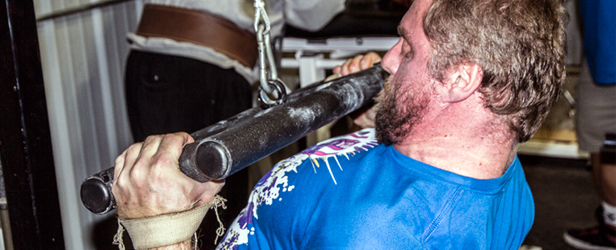
Fitness, in-shape, being fit, and other axioms
Ah, the ambiguity of the fitness world. If you pay attention to any type of sport, train frequently, or read any fitness magazines (or all the great articles offered on elitefts™), I’m sure you’ve heard tons of people use the axioms “fitness,” “in-shape,” “being fit,” and anything along those lines quite loosely.
Tune into World Cup or Premier league coverage and you will hear soccer coaches and analysts talk about whether or not a player is fit at the beginning of the season or coming off an injury. Watch ESPN, anything related to the NFL, or Division I football and you'll hear the coaches and analysts from our great country question whether players are in shape. CrossFit claims to develop the “fittest” athletes on the planet, which really misses the boat altogether (keep reading if you want to know why). Finally, an office worker might say that he's “unfit” or “out of shape” after trying to chase his kids around the park for fifteen minutes.
It seems that every sport and physical preparation philosophy has its own definition of fitness. Why is that?
What’s crazy is that two of the absolute giants of the sports science world give straightforward, pragmatic, and easily applicable definitions of fitness. Mel Siff, in his book Facts and Fallacies of Fitness, gives the following definition of fitness:
“…the ability to execute a given task effectively and safely.”
Dr. Siff goes on to describe fitness as comprising both physical (strength, speed, stamina) and psychological (pain threshold, will, motivation) abilities (Siff 2003).
Yuri Verkhoshansky, who is one of the great pioneers in physical preparation, defined fitness in a similar way (Verkhoshansky 2009):
“…the specific ability to use work capacity to execute a given task under particular conditions…fitness may be defined as the ability to cope with the demands of a specific task efficiently and safely.”
Something to note is that Verkhoshansky and Siff worked together conducting research and coauthored earlier versions of the most popular sport science text Supertraining. This explains the similarity between their definitions. Nonetheless, they were two of the leading researchers and authors in the field of sports science for many decades, so the validity of both definitions is widely accepted.
As you can see, fitness is a much more dynamic and specific entity than what most individuals perceive it to be. For a real world example, think about the differences between a powerlifter, a marathon runner, and a construction worker, all having an optimal level of fitness. The powerlifter’s task is to lift as much weight as he possibly can in three different exercises—the barbell back squat, the barbell bench press, and the barbell deadlift. The execution to complete each of his individual lifts will only take a few seconds while the entire powerlifting competition will take an entire morning and proceed well into the afternoon before completion. He will have to deal with the mental aspects of staying attentive in between lifts and attempts, and he will need to adjust to changes in flights, individual lifter order, and selecting his weights.
A marathon runner must complete 26.2 miles by running this distance in the shortest amount of time possible. Currently, the world record is 2:03:38 set by Patrick Makau of Kenya in September 2011 (marathon world record progression 2013). Physically, this requires the individual to maintain a steady pace for a long period of time. The mental standpoint kicks in with the long duration of continued activity. Marathon running will have different portions of monotonous (when a competitor is by himself) and dynamic (during the start when there a ton of runners cluttered together) situations.
Finally, a construction worker will have the most erratic and unpredictable task out of the three. Construction workers will often be tasked with a variety of responsibilities such as lifting and carrying heavy objects (concrete bags, machinery, chains), running various machines (jack hammer, drills), shoveling, digging, and so forth. This task could go on for many hours, usually the typical 9 a.m. to 5 p.m. shift, which is a total of eight hours! Each of these different individuals will require a different training regime to ensure that they are fit to perform their task.
Now that we've defined fitness, in Part 2 we will look at how several well-known coaches and trainers look at the topic of fitness.
To be continued...
References
- Marathon world record progression. (2013). Retrieved: January 11, 2013. From: Wikipedia: http://en.m.wikipedia.org/wiki/Marathon_world_record_progression.
- Siff M (2003) Facts and Fallacies of Fitness. 6th Edition. Denver: Perform Better.
- Verkhoshansky Y (2009) Supertraining. 6th edition (expanded). Rome: Ultimate Athlete Concepts, USA.









